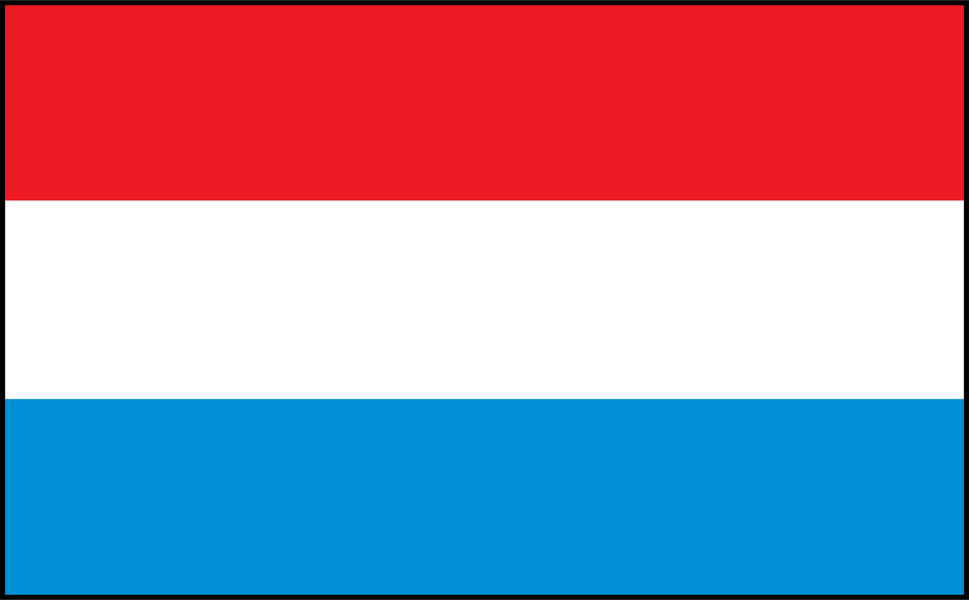Interesting Luxembourg Facts
Luxembourg is a landlocked country located in Western Europe where it is bordered by Belgium, France and Germany. It spans 2,586 km2 of land. The estimated population of Luxembourg is more than 583,455.
Check out interesting Luxembourg facts and information about this European country with our fact file for kids. Identify important facts about the size, climate, currency, flag, continent, people, culture, geography, landscape, landmarks, population, location and language of Luxembourg.
Explore Europe with our interesting Luxembourg facts for kids based on questions such as: What continent is Luxembourg in? What is the climate like in Luxembourg? How big is Luxembourg? What is the population of Luxembourg? What color is the flag of Luxembourg?
Luxembourg Fact File: Continent: Europe * Country Name(s): Luxembourg, Grand Duchy of Luxembourg * Location: Western Europe * Bordering: Belgium, France and Germany * Capital City: Luxembourg * Size: 2,586 km2 * Estimated Population: over 583,455 * Currency: Euro (EUR) * Language(s): French, German and Luxembourgish * Country Code: +352
Interesting Luxembourg Facts for Kids
Interesting Facts for Kids 1: Size & location facts
Luxembourg is located on the continent of Europe, where it has a landlocked position and is bordered by Belgium, France and Germany. There are seven continents in the world: Asia, Africa, North America, South America, Europe, Antarctica, Australia (Oceania). Europe is the world's second smallest continent, occupying a total area of 10,180,000 km2. Europe has 51 countries, with some countries belonging to both Europe and Asia, and forms 6.8% of the world's landmass. Luxembourg is a landlocked country that spans a total area of approximately 2,586 km2. It is one of the smaller countries on the continent of Europe.
Interesting Facts for Kids 2: Population facts
The population of this European country is over 583,455 people. The majority of Luxembourg's inhabitants reside in Luxembourg which is the country's most populous city. Luxembourg has a low population when compared to most other countries across the world, its overall population density is approximately 194 people per sq km. The estimated population of Europe is approximately 738,442,000 inhabitants, making it the continent with the second smallest population in the world. The continents in order of population, starting with highest population first, are: Asia, Africa, North America, South America, Europe, Australia (Oceania Region) and Antarctica. The total population of the entire world is in excess of 7.6 billion people.
Interesting Facts for Kids 3: Capital & major cities
Luxembourg's capital city is called Luxembourg. The names of other major cities situated in this country are Esch-sur-Alzette, Dudelange, Schifflange, Bettembourg and Pétange.
Interesting Facts for Kids 4: Country borders
The following information provides a guideline to the approximate border lengths of Luxembourg:
Belgium 130 km, France 69 km, Germany 128 km.
Interesting Facts for Kids 5: Climate and geography facts
Luxembourg experiences a continental climate defined by cool summers and mild winters. The geography of Luxembourg is formed of gentle uplands, valleys, mountainous regions in the north and flood plain in the southeast. The lowest point of Luxembourg is the Moselle River at 133m, and the highest point of elevation is Buurgplaatz at 559m.
Interesting Facts for Kids 6: Natural Resources of Luxembourg
Natural resources can be described as materials and substances found naturally occurring on Earth. Natural resources are very important across the world, and can be exploited for economic gain. The level of natural resources present in an individual country depends on varying factors which are influenced by the geography, climate and location of that country. Some countries, such as Russia, The United States, Saudi Arabia and Canada, have many natural resources, where as some other countries have limited to none. Three of the primary uses of natural resources are food, transport and construction. The following examples provide information on the everyday uses of natural resources: Fish occurs naturally in many bodies of water and can be caught for food consumption. Crude oils can be refined into various fuels in order to power vehicles/cars. Wood/timber can be extracted from forests and used to construct houses and furniture. The natural resources of Luxembourg include iron ore, and arable land suitable for growing crops.
Interesting Facts for Kids 7: Language facts
The official languages of Luxembourg are Luxembourgish, French and German. French and German are used widely in business and administration. Portuguese is also widely spoken in this country. Other languages that are used by a smaller percentage of the population include Italian and English.
Interesting Facts for Kids 8: Religion facts
The primary religion of Luxembourg is Christian at approximately 70% of the population, with the major religion being Roman Catholic. Around 2% are Muslim. The rest of the population either belongs to other religions or no religion at all.
Interesting Facts for Kids 9: Symbols of Luxembourg
Each country has its own individual culture, history and identity. Flags, emblems, symbols, mottos, colors, anthems and songs represent the national pride and identity of countries worldwide. These national symbols are created through the unique history of a nation and can portray both hardship and prosperity, embodying freedom, strength and unity. Flags, emblems, colors, songs and mottos reflect the past, present and future aspirations of a country, and create an important image to the rest of the world. National symbols can represent a combination of things that are important to a country such as birds, animals, plants, geographical features, tools of agriculture, crops, and tools of war. The following facts and information provide a guide to some of the most important national symbols, songs and colors of Luxembourg:
National symbol(s): red, rampant lion
National colors: red, white and light blue
National Anthem/Song: Ons Heemecht (Translation: Our Motherland); De Wilhelmus (Translation: The William)
National Holiday(s): National Day 23 June
National Motto(s): Mir wëlle bleiwe wat mir sinn (Translation: We wish to remain what we are)
